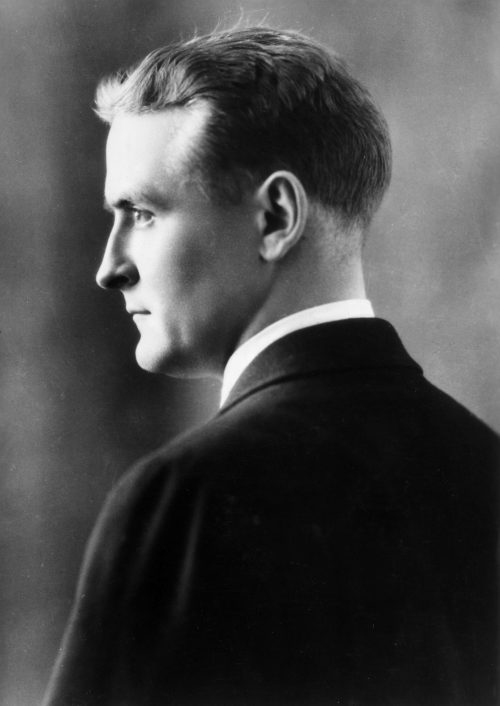Houses as Fitzgerald Characters
 Scott Fitzgerald and Ginevra King.
Scott Fitzgerald and Ginevra King.

By Megan McKinney
“It amazed him—he had never been in such a beautiful house before. But what gave it an air of breathless intensity was that Daisy lived there…” so went the beginning of F. Scott Fitzgerald’s description of Charles Garfield King’s Lake Forest country house in The Great Gatsby. Like many of the writer’s heroines, Gatsby’s Daisy Buchanan was modeled on Garfield King’s daughter, Ginevra. Although not as vital to the author as his human characters, Fitzgerald’s houses were often very carefully drawn in his novels and short stories.
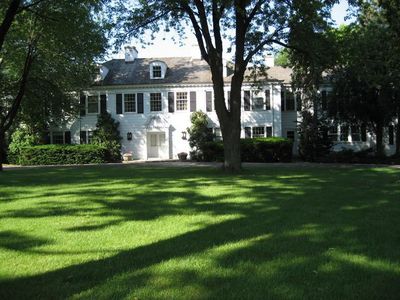
For decades, Fitzgerald scholars and Gatsby aficionados have debated the sources for the memorable houses in his most successful novel. There is no question about the King house–above and below—where Scott is known to have been a houseguest, however the novel’s two most notable residences escape certain identification.

Tom and Daisy Buchanan’s East Egg house, a central Gatsby “character,” is described as “a cheerful red-and-white Georgian Colonial mansion, overlooking the bay,” yet many have felt it was modeled on the all-white Herbert Bayard Swope estate in Sands Point Long Island.

This is the Swope house in its 1920’s heyday. There is however a catch that goes beyond the mansion’s color; the Swopes didn’t buy it until 1928, three years after The Great Gatsby was published.
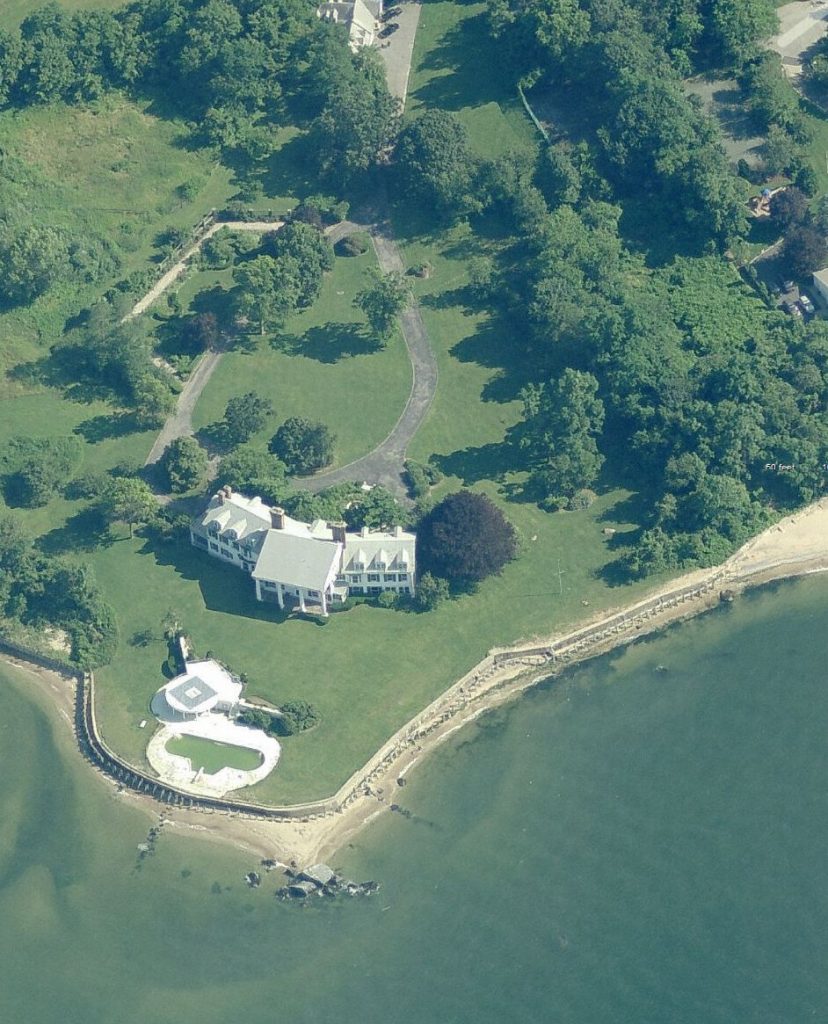
Whether or not it was model for the Buchanan house, the activity within the Swope house was thoroughly Gatsbyesque. Herbert Bayard Swope–for nearly two decades editor of the World, Pulitzer’s great vintage New York newspaper–was one of the city’s most visible figures and as famous for the all-night parties he and his wife, Maggie, threw as he was for the World. Irving Berlin or George Gershwin would be at the piano and regular guests included Edna Ferber, Noel Coward, Bernard Baruch, Helen Hayes, Leslie Howard, the Barrymores and on and on. Some guests didn’t go home for days; Oscar Levant remained for 20 years.
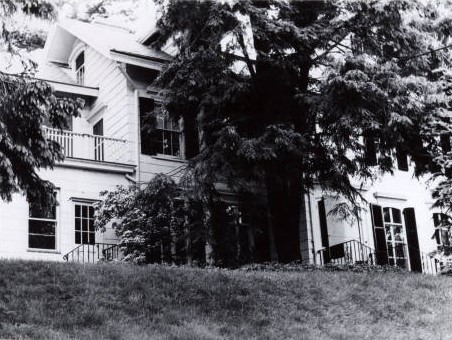
Previously, the Swopes had lived in Great Neck, next door to Fitzgerald’s close friend Ring Lardner, who often checked into a hotel in New York for the night to escape the Swope party noise. Fitzgerald was a regular at both versions of the infamous Swope bashes, so there is every reason to believe Jay Gatsby’s entertaining was patterned on the Swope style of the Great Neck period.
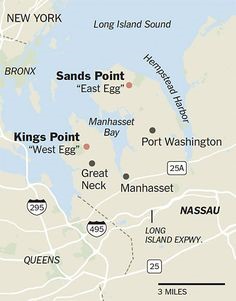
Fitzgerald’s East Egg, where Daisy and Tom lived, was patterned on old money Sands Point. Jay Gatsby’s house was located in the nouveau riche West Egg/Great Neck, across the bay. The mansion was “…a factual imitation of some Hôtel de Ville in Normandy,” Fitzgerald wrote, “with a tower on one side.”
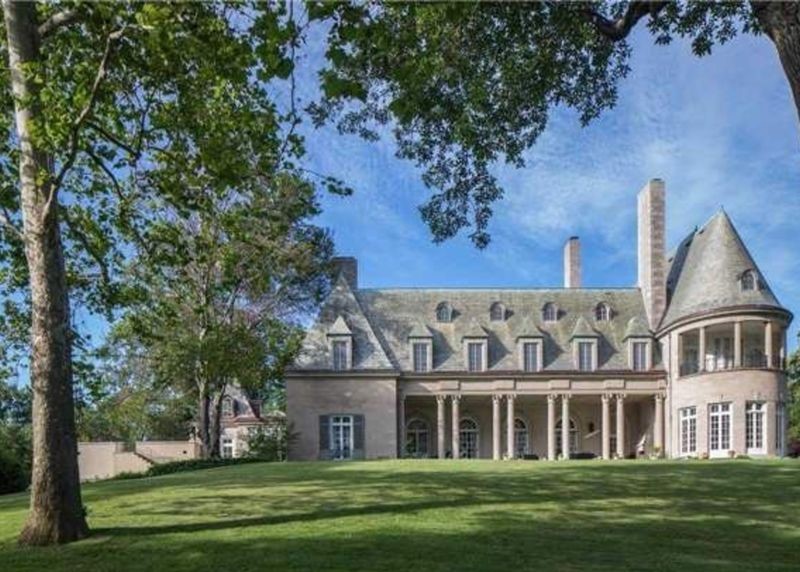
There have been several nominations for the Gatsby house prototype; two of the most interesting are actually in Sands Point/East Egg and were developed by old money owners. The above house was designed in 1928 by McKim, Mead & White for Mary Harriman Rumsey, daughter of railroad magnate E.H. Harriman. Mary was founder of Junior League of the City of New York and sister of mid-century New York Governor W. Averell Harriman. Yet, again, the timing is off. Fitzgerald left for France to finish Gatsby in1924.
Mary Rumsey is mentioned repeatedly in Scott’s Ledger in 1923, beginning in May, and appears in Gatsby as “a pretty woman in a brown riding-habit.”

Beacon Towers, also in Sands Point, was another often cited as inspiration for the Gatsby house. The ownership was old money but with flamboyant Gatsby flash—and towers everywhere. The castle-like mansion was built in 1918 for Alva Belmont, former wife of William Kissam Vanderbilt and widow of Oliver Belmont. Alva was mother of Consuelo Vanderbilt, who she famously forced into a loveless marriage to the ninth Duke of Marlborough.

Beacon Towers from the air. In 1927, this Gatsby house nominee was purchased from Mrs. Belmont by newspaper publisher William Randolph Hearst as a present for his estranged wife, Millicent, mother of his five sons.
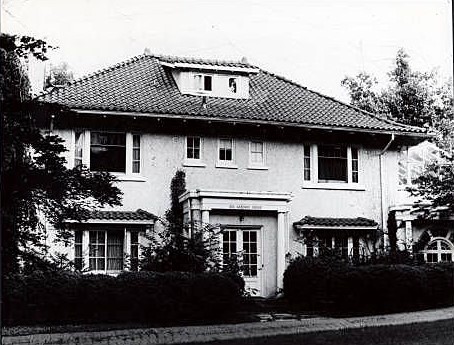
The Fitzgeralds’ 1922-24 rented Great Neck house, above, was ordinary enough to be the model for the house of Jay Gatsby’s next door neighbor, Nick Carraway, which it was. However, times have changed. The image below shows the now $4 million house today:

Six Gateway Drive is no longer “…a weatherbeaten cardboard bungalow at eighty a month…”
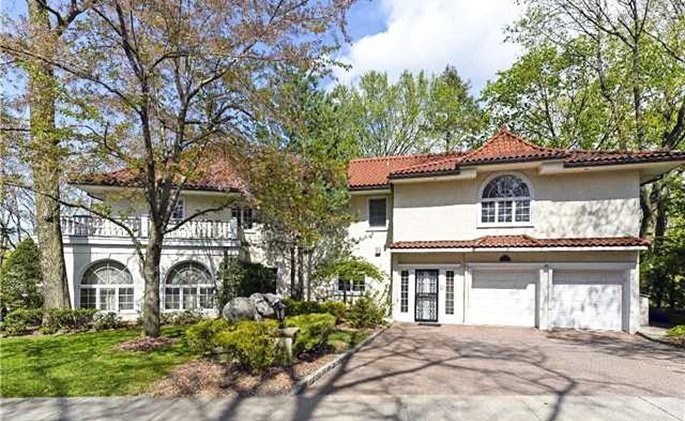
Fitzgerald wrote the first three chapters of The Great Gatsby in the room above the garage of the house–long before it was updated.
Edited by Amanda K. O’Brien
Author Photo by Robert F. Carl


